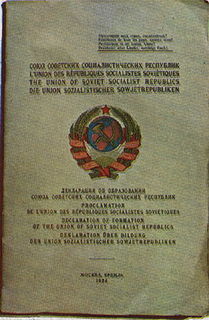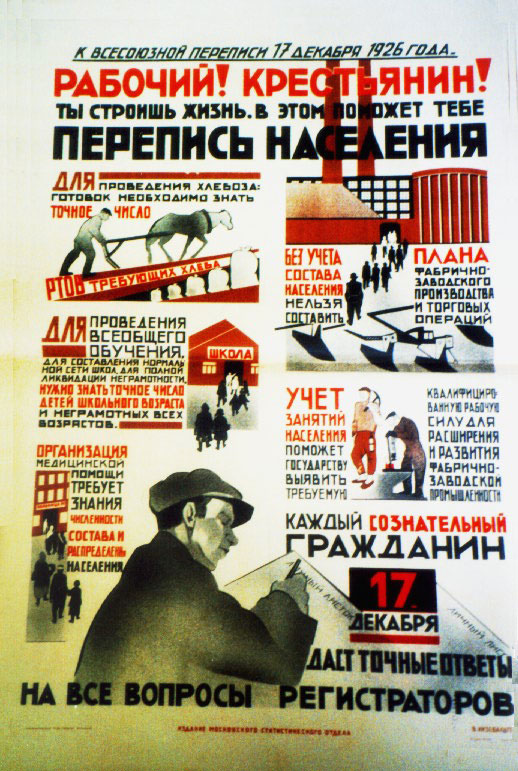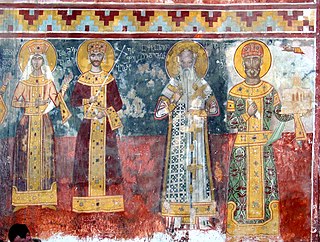
The Kazakh Soviet Socialist Republic was one of the transcontinental constituent republics of the Soviet Union from 1936 to 1991 in northern Central Asia. It was created on 5 December 1936 from the Kazakh ASSR, an autonomous republic of the Russian SFSR.

Uzbekistan is the common English name for the Uzbek Soviet Socialist Republic and later, the Republic of Uzbekistan, that refers to the period of Uzbekistan from 1924 to 1991. as one of the constituent republics of the Soviet Union. It was governed by the Uzbek branch of the Soviet Communist Party, the only legal political party, from 1925 until 1990. From 1990 to 1991, it was a sovereign part of the Soviet Union with its own legislation. Sometimes, that period is also referred to as Soviet Uzbekistan.
An Autonomous Soviet Socialist Republic (ASSR) of the Union of Soviet Socialist Republics was a type of administrative unit in the Union of Soviet Socialist Republics (USSR) created for certain nations. The ASSRs had a status lower than the union republics of the USSR, but higher than the autonomous oblasts and the autonomous okrugs.
The Flags of the Soviet Socialist Republics were all defaced versions of the flag of the Soviet Union, which featured a golden hammer and sickle,, and a gold-bordered red star on a red field.
Karakalpak Autonomous Oblast was created on February 19, 1925 by separating lands of the ethnic Karakalpaks from the Turkestan Autonomous Soviet Socialist Republic and Khorezm People's Soviet Republic.

The Khorezm People's Soviet Republic was the state created as the successor to the Khanate of Khiva in February 1920, when the Khan abdicated in response to pressure and officially declared by the First Khorezm Kurultay (Assembly) on 26 April 1920. On 20 October 1923, it was transformed into the Khorezm Socialist Soviet Republic.
The State Prizes of the Soviet Republics were each republic counterpart to the USSR State Prize. Each republic granted several different prizes, generally named after writers or artists from the republic, as well as a blanket Komsomol prize for young artists.
Autonomous oblasts of the Union of Soviet Socialist Republics were administrative units created for a number of smaller nations, which were given autonomy within the fifteen republics of the USSR.

There has been a substantial population of Russian Kazakhstanis since the 19th century. Although their numbers have been reduced since the breakup of the Soviet Union, they remain prominent in Kazakh society today. Russians formed a plurality of the Kazakh SSR's population for several decades.
National delimitation in the Union of Soviet Socialist Republics was the process of creating well-defined national territorial units from the ethnic diversity of the Union of Soviet Socialist Republics (USSR) and its subregions. The Russian term for this Soviet state policy is razmezhevanie, which is variously translated in English-language literature as national-territorial delimitation, demarcation, or partition. National delimitation is part of a broader process of changes in administrative-territorial division, which also changes the boundaries of territorial units, but is not necessarily linked to national or ethnic considerations. National delimitation in the USSR is distinct from nation-building, which typically refers to the policies and actions implemented by the government of a national territorial unit after delimitation. In most cases national delimitation in the USSR was followed by korenizatsiya.

Soviet Central Asia refers to the section of Central Asia formerly controlled by the Soviet Union, as well as the time period of Soviet administration (1918–1991). Central Asian SSRs declared independence in 1991. In terms of area, it is nearly synonymous with Russian Turkestan, the name for the region during the Russian Empire. Soviet Central Asia went through many territorial divisions before the current borders were created in the 1920s and 1930s.

The coat of arms of the Kazakh Soviet Socialist Republic was adopted on March 26, 1937, by the government of the Kazakh Soviet Socialist Republic. The coat of arms is based on the coat of arms of the Soviet Union.
Sergey Efimovich Malov was a Russian Turkologist who made important contributions to the documentation of archaic and contemporary Turkic languages, classification of the Turkic alphabets, and the deciphering of the Turkic Orkhon script.

The Deportation of the Chechens and Ingush, also known as Aardakh, Operation Lentil was the Soviet forced transfer of the whole of the Vainakh populations of the North Caucasus to Central Asia on February 23, 1944, during World War II. The expulsion, preceded by the 1940–44 insurgency in Chechnya, was ordered by NKVD chief Lavrentiy Beria after approval by Soviet Premier Joseph Stalin, as a part of a Soviet forced settlement program and population transfer that affected several million members of non-Russian Soviet ethnic minorities between the 1930s and the 1950s.
Yuri Alexeyevich Zuev or Zuyev was a Russian-born Kazakh sinologist and turkologist.
The Siberian Bukharans are an ethnographic and sociocultural group in Siberia. Their ancestors came from the Khanate of Bukhara, and they constituted a significant part of the Siberian Tatars.

The Treaty on the Creation of the USSR officially created the Union of Soviet Socialist Republics (USSR), commonly known as the Soviet Union. It de jure legalised a union of several Soviet republics that had existed since 1919 and created a new centralised federal government where key functions were centralised in Moscow.

The Tajik Autonomous Soviet Socialist Republic was an autonomous republic within the Uzbek SSR in the Soviet Union. It was created in October 1924 by a series of legal acts that partitioned the three existing regional entities in Central Asia – Turkestan ASSR, Bukharan People's Soviet Republic, and Khorezm People's Soviet Republic – into five new entities based on ethnic principles: Uzbek SSR, Turkmen SSR, Tajik ASSR, Kara-Kirghiz Autonomous Oblast, and Karakalpak Autonomous Oblast.

The Bukharan People's Soviet Republic was a short-lived Soviet state that governed the former Emirate of Bukhara during the years immediately following the Russian Revolution. In 1924, its name was changed to the Bukharan Socialist Soviet Republic. After the redrawing of regional borders, its territory was assigned mostly to the Uzbek SSR and some to the Turkmen SSR.





















